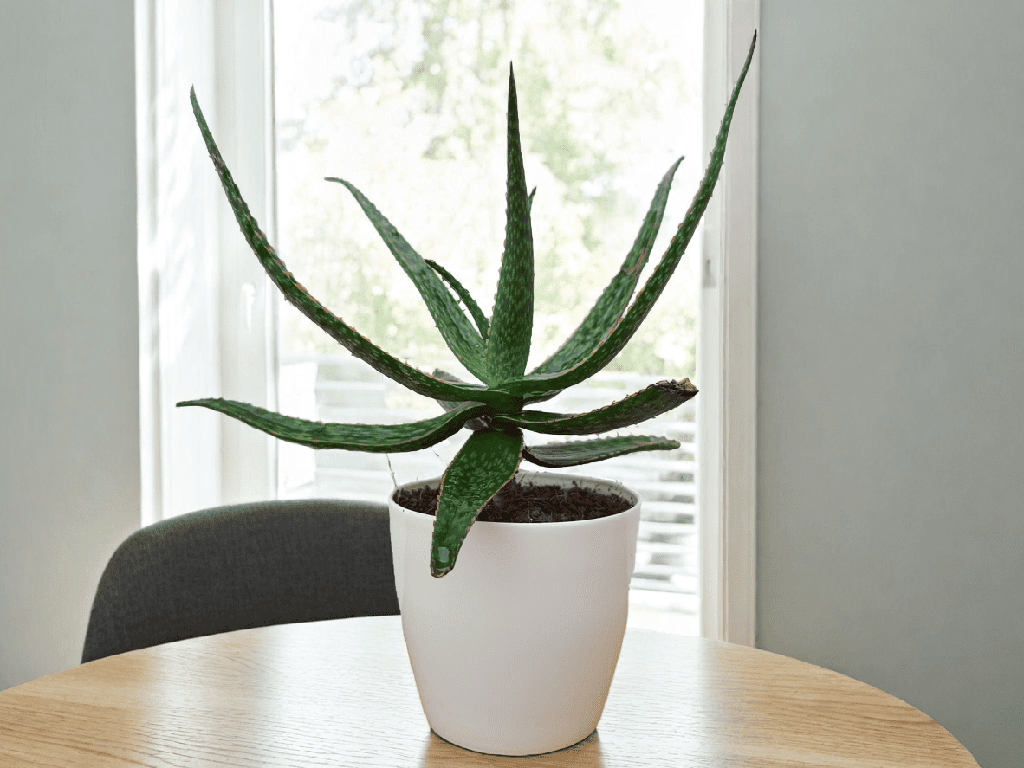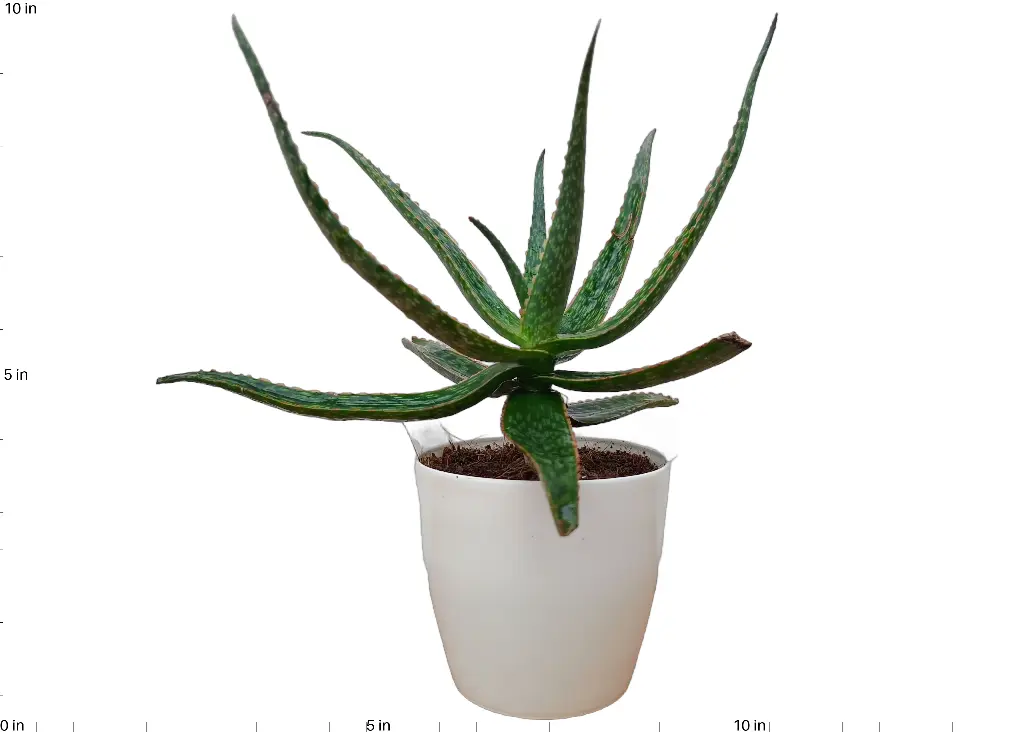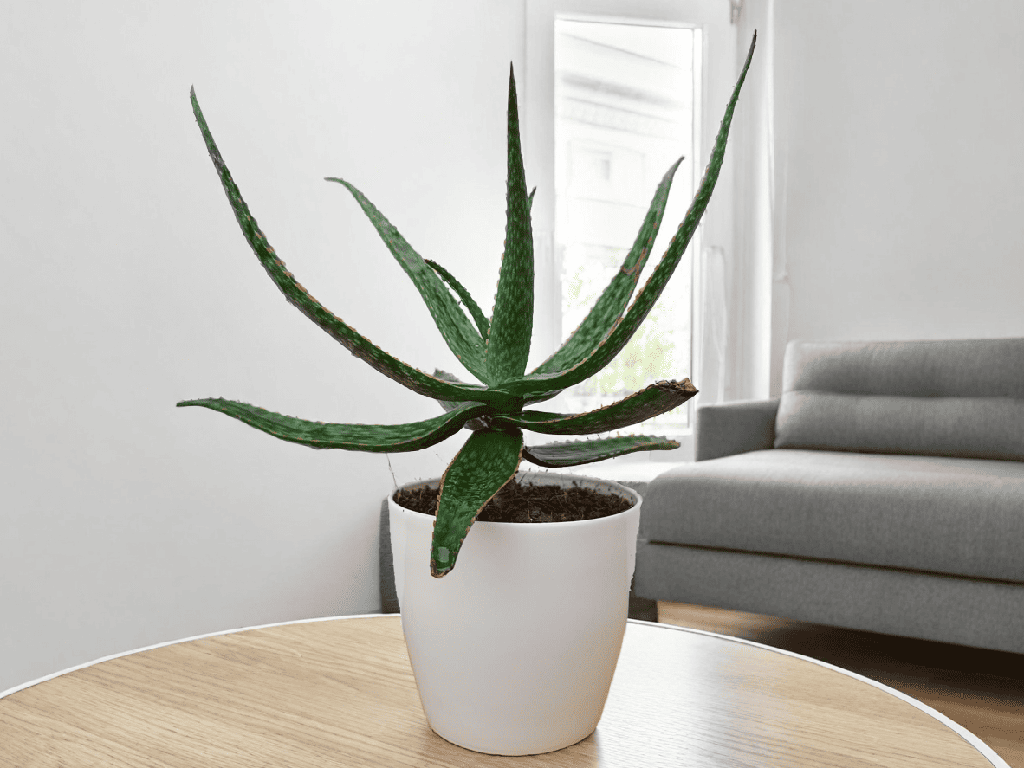Product Specifications
Aloe vera is a succulent plant known for its thick, fleshy leaves filled with a soothing gel. Native to the Arabian Peninsula, Aloe vera has spread globally, thriving in arid climates. Its green to grey-green leaves, which grow in a rosette pattern, are lance-shaped with serrated edges and can reach up to 39 inches in length. Historically, Aloe vera has been used in traditional medicine, revered by ancient Egyptians as the "plant of immortality" and employed in Ayurvedic and Chinese healing practices. It thrives in bright, indirect sunlight and well-draining soil, with infrequent watering, making it an ideal indoor or outdoor plant. Beyond its decorative appeal, Aloe vera is celebrated for its healing properties, particularly the gel used to soothe burns, cuts, and skin irritations. The plant also aids in air purification and boasts anti-inflammatory and immune-boosting benefits, making it a versatile addition to any home.
- Skin Care: Aloe vera gel is widely used to soothe burns, cuts, and skin irritations. It's also a popular ingredient in cosmetics and skin care products due to its moisturizing properties.
- Digestive Health: Aloe vera juice is consumed to aid digestion and relieve constipation. It's known to have anti-inflammatory and laxative effects.
- Air Purification: Like other succulents, Aloe vera helps purify the air by removing toxins such as formaldehyde and benzene.
- Immune Boost: Aloe vera contains vitamins A, C, and E, which are antioxidants that help boost the immune system.
- Anti-inflammatory: The plant has anti-inflammatory properties, making it beneficial for conditions like arthritis when applied topically.
- Light: Aloe vera plants need bright, indirect sunlight. They can also tolerate some direct sunlight, but too much intense sun can cause the leaves to turn brown.
- Water: Water the plant deeply but infrequently. Allow the soil to dry out completely between waterings. Overwatering can lead to root rot.
- Soil: Use a well-draining cactus or succulent potting mix. You can also add sand or perlite to improve drainage.
- Temperature: Aloe vera prefers temperatures between 55°F to 80°F (13°C to 27°C). They are not frost-tolerant, so bring them indoors if the temperature drops below 50°F (10°C).
- Humidity: Aloe vera does well in low to moderate humidity environments. It's perfect for indoor settings.
- Fertilizer: Feed your aloe vera plant sparingly. Use a balanced, water-soluble fertilizer once a month during the growing season (spring and summer).
- Propagation: Aloe vera can be easily propagated by removing the offsets (pups) that grow at the base of the plant. Allow the offsets to dry for a day or two before planting them in their own pots.
Ques 1: Can Aloe Vera be used for skincare?
Answer: Yes, Aloe Vera gel is excellent for soothing burns, moisturizing, and treating minor skin irritations.
Ques 2: Does it require any special fertilizers?
Answer: Aloe Vera thrives with a diluted succulent or cactus fertilizer every 4–6 weeks during the growing season.
Ques 3: How can I harvest the gel safely?
Answer: Cut a mature leaf close to the base, let the yellow sap drain, and scoop out the clear gel inside.





